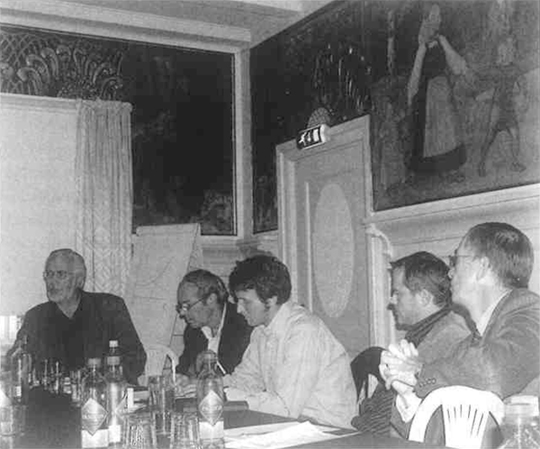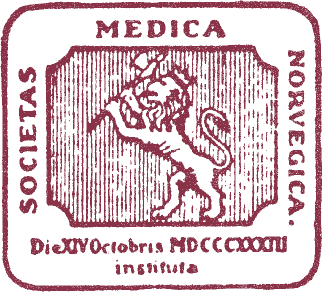Task force evaluation revisited
Michael 2004; 1: 328–31.
On crisp and sunny September 30, 2004, fifteen people gathered in the subdued light of the halls of prestigious Fridtjof Nansen Institute outside Oslo. The agenda was to discuss the Task Force on communicable disease control in the Baltic Sea region, a three year venture including eleven countries and engaging more than one thousand collaborators (1). The institute has its premises in the old villa Polhøgda where the explorer, scientist, diplomat, politician and Nobel laureate Fridtjof Nansen lived and worked. The venue of the meeting was his dining room, a hall lavishly decorated in 1907 with fairy-tale motives by the famous painter Erik Werenskiold. It was probably unintentional that the group had allegories above their heads which easily could be reinterpreted according to the topic of the meeting: A Nordic looking lady guiding small children with a brown bear lurking in the background.
The organisation and administration of the Task Force had in some ways been different from that of other collaboration efforts, aiming at a strong and committed local participation. And in fact, 223 small projects had been locally proposed by means of a standardised system, the so called Logical frame Approach (LFA) (2). A large number of the projects, 138, were really successfully carried through, many with obvious lasting value and bearings for future work.
The Task Force had been subject to thorough evaluation during the process (3–6), so that ample material was at hand when the work was concluded and the final report could be presented to the prime ministers in the Baltic Sea region, who had taken the original initiative (7).
The Task Force report can also be seen as a contribution to discussions about organisation and outcome in international collaboration; this meeting being one of the arenas. There were three introductions. The first was given by the Task Force leader Harald Siem. He gave a short outline of the project and the differences between traditional organisation and the Task Force principles. The general idea of the Task Force was to secure a system where on the road from supplier to receiver, most of the resources were spent on the receiving side, not on the donor side or lost to local bureaucrats in between, a fate often experienced in international work. His sketch illustrating this point can be seen on our photograph just below the bear, no comments on that.

Under the fairy-tale: From left are seen: Peter Johan Schei, director of the Fridthjof Nansen Institute and chairman of the meeting, Steinar Andresen, Lars Rowe, Geir Hønneland and Anders Seim. (Photo: Øivind Larsen)
Lars Rowe, historian and researcher from the Fridthjof Nansen Institute and co-author of the principal evaluation (6), summarised the interview-based evaluation of the large project, where 20 million Euros had been spent, (8,4 million on direct project support!), 65 % of this covered by Norway. His well-balanced talk concluded by giving the project, its organisation and its administration a mark from the Norwegian schooling system, M-, which should be compared to a B with a minus attached. The obvious strength of the Task Force idea was its close contact with the people on the ground and its successes here. The project had been launched as a priority on highest political level by the prime ministers of the countries involved, but the top support later had been weak, a clear disadvantage as compared to traditional organisation with tight top steering and follow up.
Steinar Andresen, senior researcher from the same institute, reviewed for a comparison of the evaluation process a similar assessment, which he had carried through on changes in WHO administration and its outcomes during the Gro Harlem Brunddand leadership 1998–2003. Especially relevant for the Task Force case were his general elaborations on what a success really is like, and in what way it should be measured, and when.
The subsequent discussion among the audience became somewhat varied, as different aspects were addressed: Task Force organisation, administration, outcomes, the evaluations performed, evaluation in general, and principles for setting up international development or relief work as such, competition among providers on the donor side, and among authorities and organisations on the side of the receivers. Examples: Stein Andresen of the Norwegian National Institute of Health expressed his preference for a more predictive bureaucratic model as opposed to the Task Force delegation principles; Stein lnge Nesvåg, Ministry of Foreign Affairs, favoured models where support was given to strengthen the national plans, while Marianne Monclair from the Red Cross missed the focus on non governmental organisations and their local networks.
However, Anders Seim, a seasoned development worker with massive experience in preventing some specific tropical diseases, deflated much of the criticism of Task Force by pointing out that the Task Force was different from most other programmes, as it was initially a political collaboration issue materialized as a medical project which even had to prove efficiency and results in a mere three year period, for then to be ended.
It was announced that this short seminar under the fairy-tale paintings was to be reviewed in a forthcoming report, and people engaged in the topic look forward to that.
References:
Siem H. Task Force on communicable disease control in the Baltic Sea region. Michael 2004; 1: 315–9.
Ohna V. The LFA Web-tool. Oslo: The Fridthjof Nansen Institute, 2004.
Arsalo A, Vainiomäki P. New approaches for health sector development collaboration in the Baltic Sea and Barents region. Helsinki: Stakes, 2004.
Rechel B, McKee M. Learning lessons from the experience of the Task Force on communicable disease control in the Baltic Sea region. London: European Centre on Health of Societies in Transition, London School of Hygiene & Tropcal Medicine, 2004.
Rowe L. Report from the Steering committee for evaluation of the Task Force on communicable disease control in the Baltic Sea region. Oslo: The Fridthjof Nansen Institute, 2004.
Hønneland G, Rowe L. Health as international politics. Aldershot: Ashgate, 2004.
Final report – Task Force on communicable disease control in the Baltic Sea region. To the 5th Baltic Sea states summit, Laulasmaa, 21 June 2004. Oslo: Ministry of Health, 2004.
Department of general practice and community medicine
University of Oslo
P. o. box 1130 Blindern
N-0318 Oslo
oivind.larsen@medisin.uio.no
